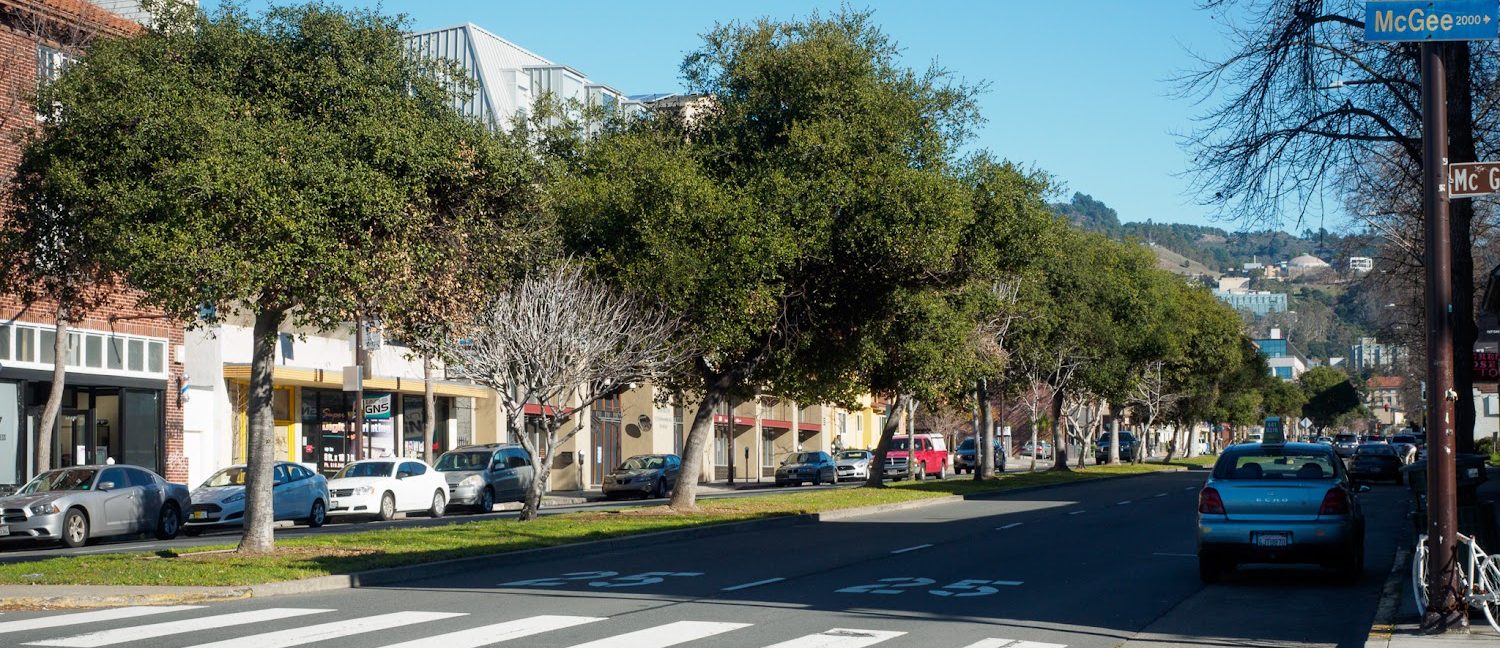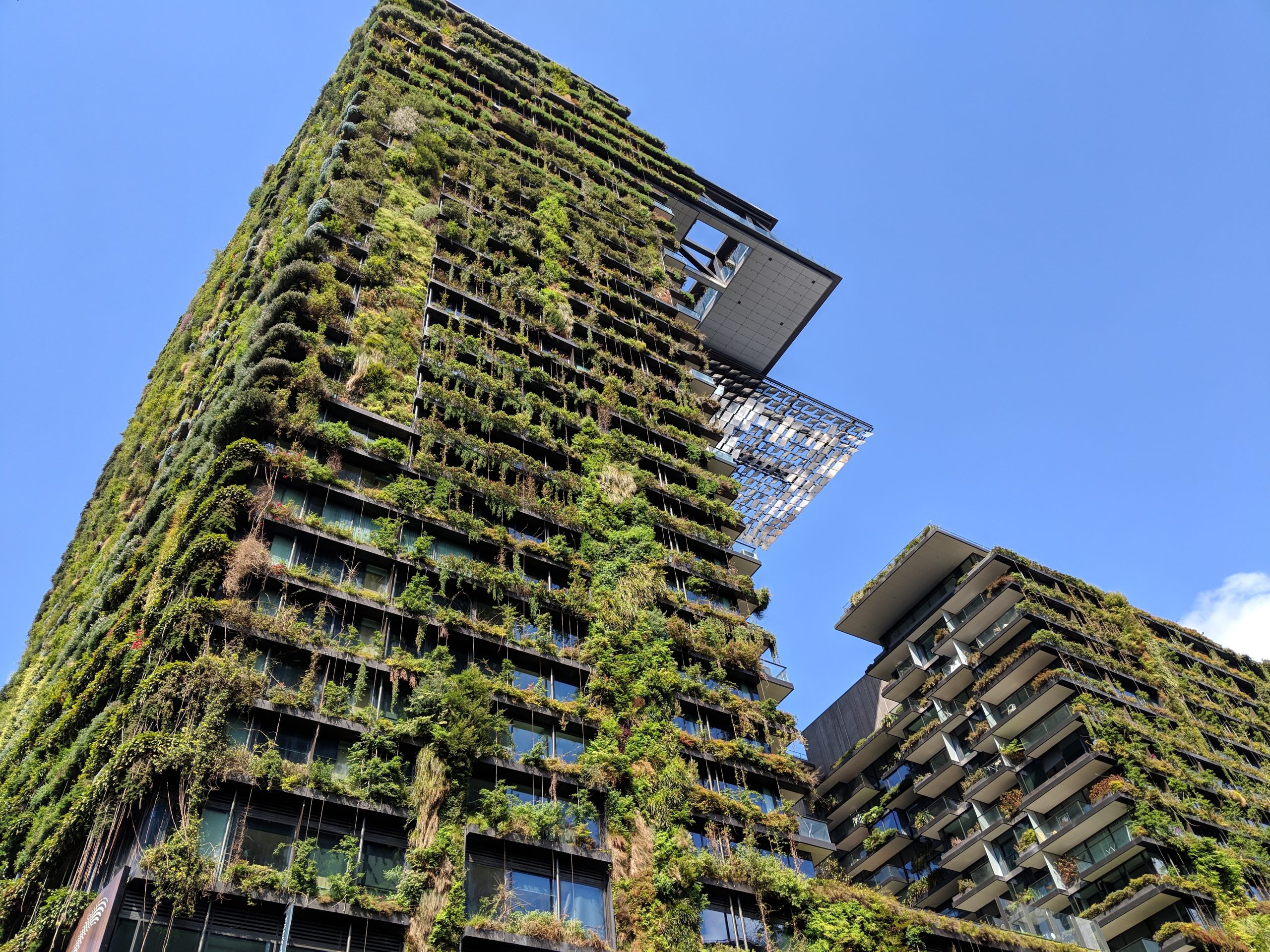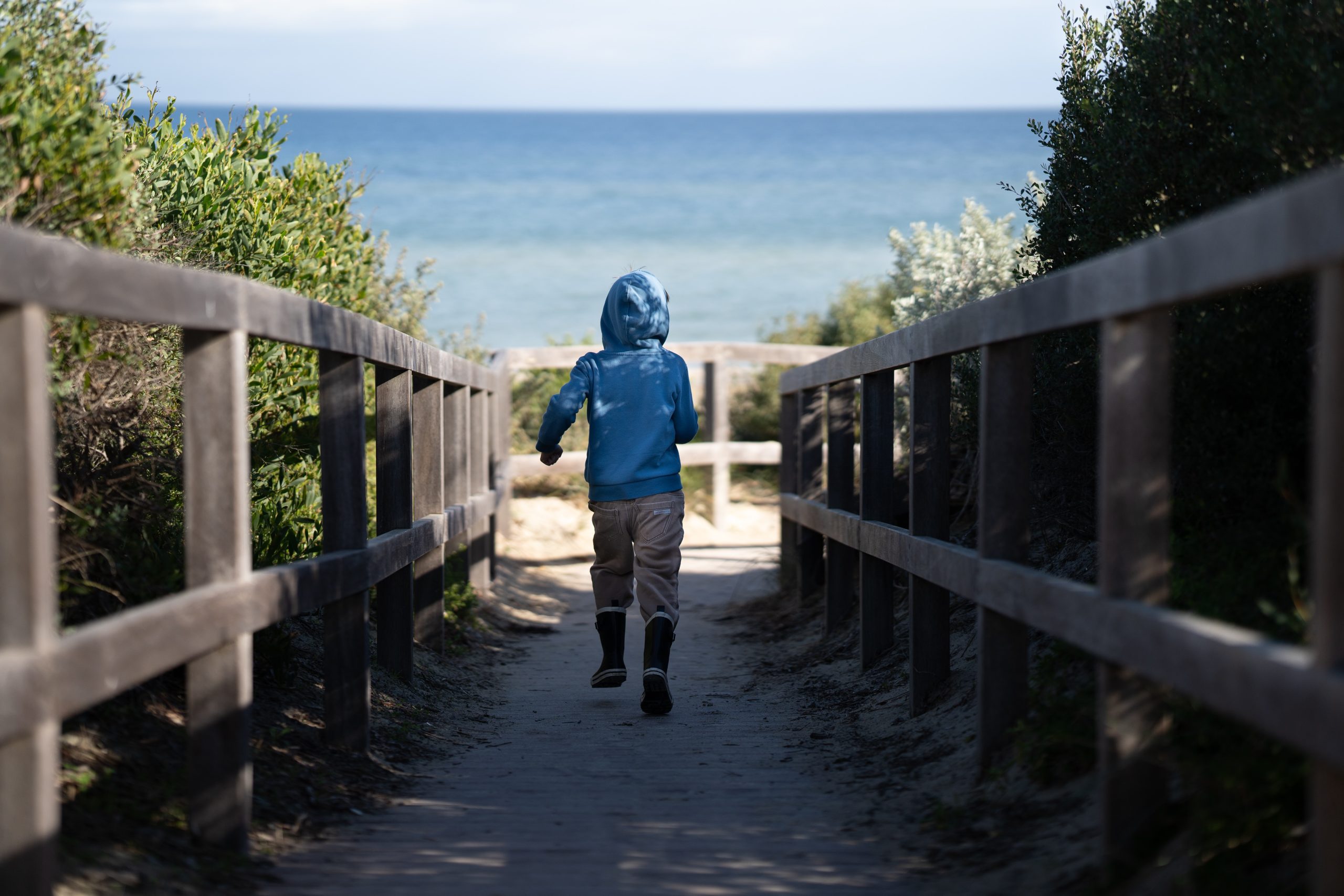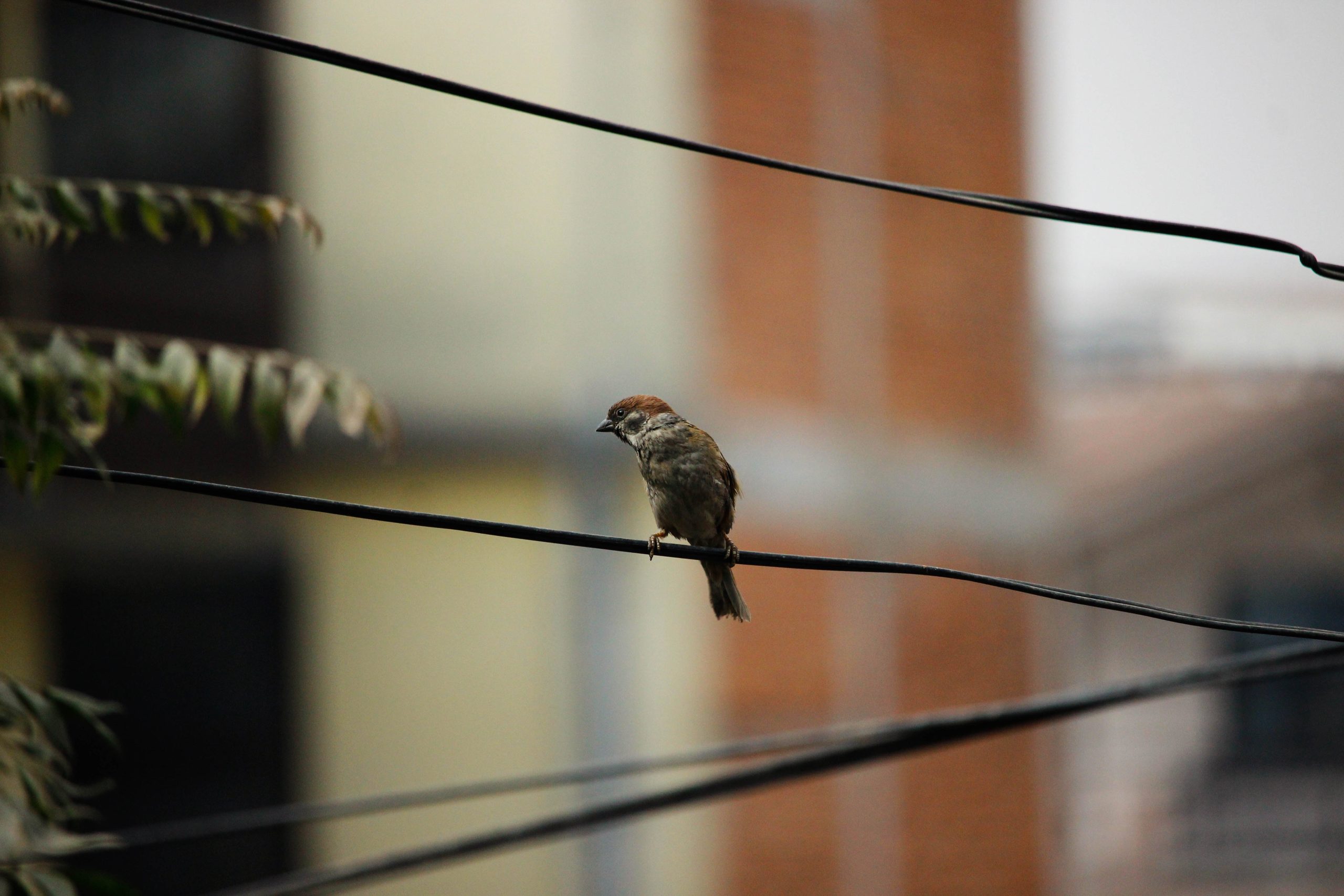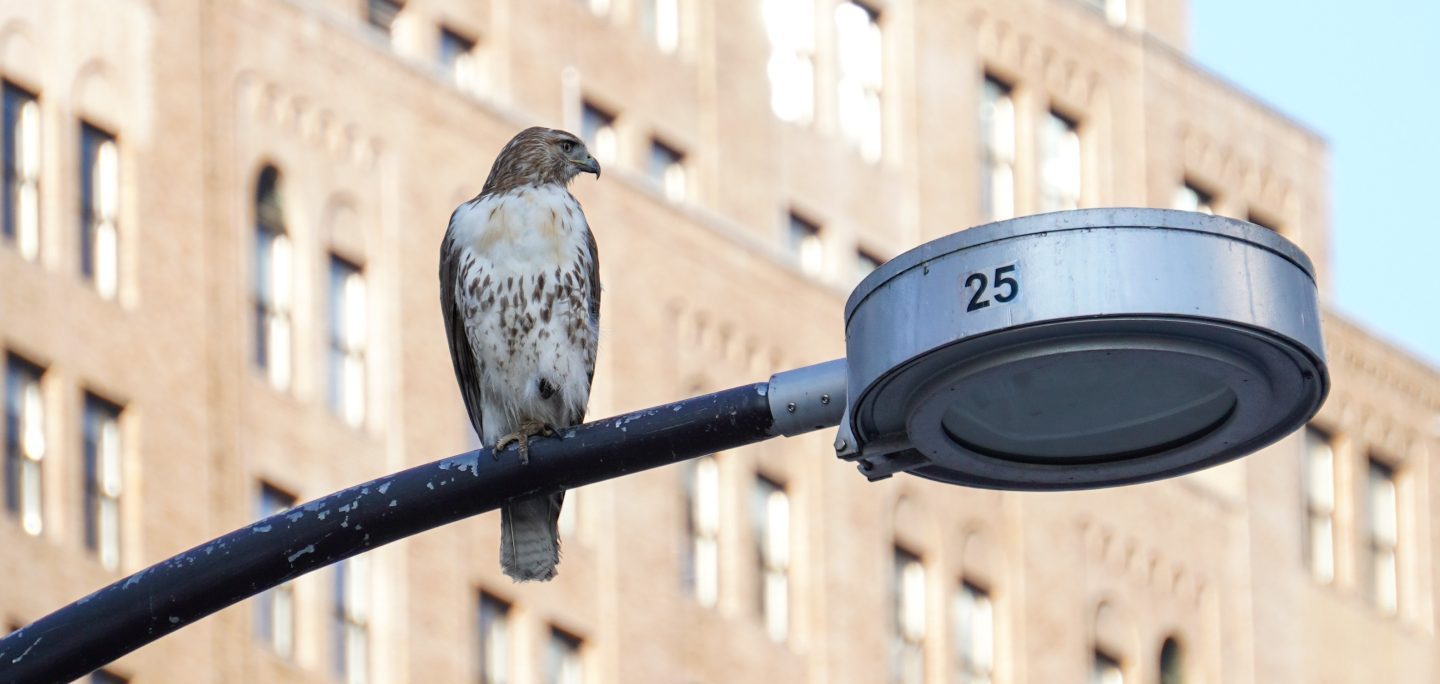Management
Image credits: SF Planning Department
Management includes interventions or practices adopted by land or facility managers that create changes in the landscape.
Land or facility managers can often adopt changes that are both beneficial to biodiversity and lower in cost. Biodiversity-friendly management actions include reducing pesticide and herbicide use, minimizing disturbance to sensitive wildlife areas, limiting the impacts of domestic cats and dogs, reducing light and noise pollution, and regulating human activity to reduce conflict with wildlife. Design actions such as fitting buildings with bird-safe windows and creating wildlife underpasses and overpasses are also essential to creating a more wildlife-friendly built environment.
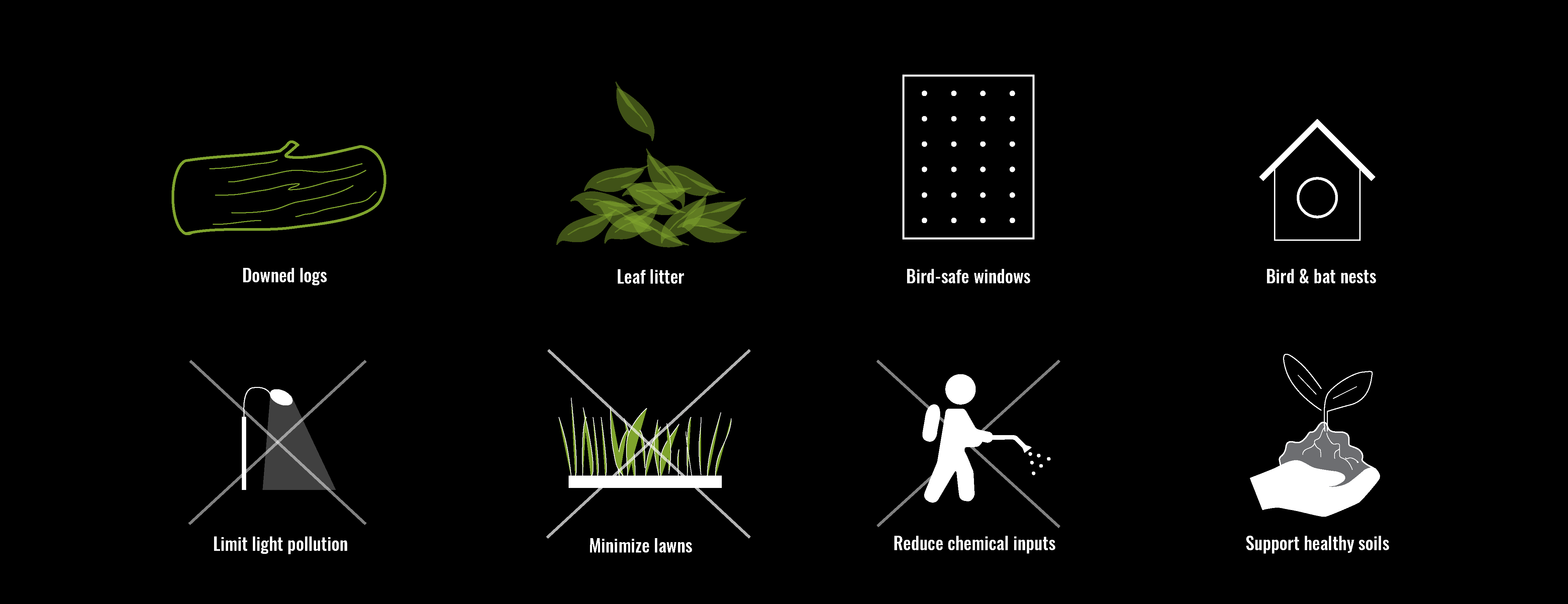
Relevant Planning and Design Strategies
The Urban Biodiversity Framework identifies seven key landscape elements that, when integrated together into urban design and planning, have the greatest chance of supporting the greatest number of species. Each element is related to various strategies from the urban planning, site design, and detailed design chapters.
- All Strategies
- Urban Planning
- Site Design
- Detailed Design
MANAGEMENT
Land or facility managers can often adopt changes that are both beneficial to biodiversity and lower in cost. Biodiversity-friendly management actions include reducing pesticide and herbicide use, minimizing disturbance to sensitive wildlife areas, limiting the impacts of domestic cats and dogs, reducing light and noise pollution, and regulating human activity to reduce conflict with wildlife. Design actions such as fitting buildings with bird-safe windows and creating wildlife underpasses and overpasses are also essential to creating a more wildlife-friendly built environment.
ACTIONS YOU CAN TAKE
Strategize management in large, regionally significant corridors and biodiversity hubs. Developing a management strategy for biodiversity is often most feasible and crucial in large, regional corridors and parks, where planning can prioritize biodiversity outcomes. However, cities can coordinate its management goals across scales—from regional-level priorities to park-level actions—by first developing a city-wide biodiversity strategy, and subsequently planning site-specific management actions that support regional goals. Priority management actions will vary for each greenspace and should be informed by local and regional biodiversity goals and challenges. Some strategic management actions may include creating wildlife crossings or closing roads during certain times of year; reducing vegetation management during sensitive periods; and leaving leaf litter, dead trees, and dead branches in place in areas with little foot traffic.
Related precedent: Addison Green Streets – East Palo Alto, CA, US
This action also supports: Connections
Make buildings and structures bird safe. Installing bird-safe windows with patterns and limiting reflections of vegetation greatly reduce bird mortality from building collisions. Cities can create policies that require bird-safe building design for new buildings and redevelopments.
Reducing the amount of non-essential lighting and reducing the intensity, spread, and wavelength of light fixtures can greatly benefit insects, birds, and other wildlife. Where lighting is required, wildlife disturbance can be minimized by wildlife-friendly lighting practices, such as dimming or turning off lights at night, using shields on street lights, and using green/blue night lights on buildings, particularly along corridors and near patches. Cities should also create “dark sky paths,” or corridors of vegetation with limited lighting that enable wildlife to move through the city without the negative impact of light pollution, which can disorient or act as a barrier to bats, birds, and other wildlife.
This action also supports: Connections
Reduce noise pollution by adding sound barriers and trees along roads. Noise pollution impacts a wide range of animals and alters their natural behaviors, which has ripple effects on the larger urban ecosystem. Vegetation reduces noise pollution through sound attenuation, or reducing sound intensity. In addition, noise-reducing barriers, different materials, improved site planning, and requiring environmental assessments that consider noise pollution can also alleviate noise pollution. Designing sound barriers and tree plantings along roads can reduce the impact of urban soundscapes on wildlife.
Remove and manage invasive species, pests, and pathogens in existing patches and corridors to enhance the quality of these elements. After efforts to remove invasive species and restore native plant communities are completed, implement regular monitoring programs to prevent future invasions and habitat degradation. Promote screening programs for diseases in animals and key vectors at plant nurseries and other centers of biotic transport, such as animal shelters, pet shops, and trading ports. Vaccinating domestic pets and wildlife at rehabilitation centers and treating them with antiviral or anti-parasitic drugs can reduce wildlife exposure to pathogens.
This action also supports: Native Vegetation
The timing of mowing, pruning, and other vegetation management can be adjusted to enable juvenile caterpillars, birds, and other wildlife to mature, as well as native plants to bear seed and fruit. Flowering plants can be planted so that nectar resources are available year-round. Reduce frequent mowing, and if possible, maintain clippings on the ground in areas where mowing is necessary. Consider nesting season and nest or den sites when designing vegetation management plans.
Maintain the integrity of vegetation and leave organic materials on the ground, including logs, branches and leaf litter. Leaf litter and dead branches may provide cover and foraging opportunities for wildlife. In large open spaces where pedestrian traffic is minimal, maintain dead trees on the landscape. Minimize leaf blowing and maintain seasonal leaf litter. Add: rock piles, brush piles, mud puddles, downed woody debris.
This action also supports: Special Resources
Promoting soil health is an important component of managing for biodiversity. Native plants and healthy soils are mutually beneficial: native plant species can create favorable soil conditions that facilitate nutrient cycling and regulate pH and other chemical properties, while improving available soil and soil health can increase the ability of native plants to establish and thrive. However, soil compaction, degradation, and fill are common in cities, and can impede native vegetation communities from establishing. Improving soil quality through mulching, soil decompaction, or other interventions can benefit native plants and the animal communities that depend on them. Additional water inputs and heavy metals in urban environments can also favor non-native species, so managing these inputs can help promote native plants.
Complementary action: Messy Landscapes
Reduce the use of chemical inputs, including pesticides, chemical fertilizers, herbicides, rodenticides, and other pest control chemicals that can impact biodiversity, particularly near water sources.
Outdoor domestic cats can have a severe impact on urban wildlife through predation and disturbance. Enacting programs to limit the impact of outdoor cats and creating educational resources for cat owners to keep cats indoors and in cat containment areas can be beneficial for a wide range of urban wildlife, including birds, reptiles, and small mammals.
Successful city-scale biodiversity planning will involve partnerships among local community groups, residents, landowners, and public agencies to create a democratic and pluralistic vision that engages nonprofessionals and leverages local place-based knowledge and priorities. Urban spaces are socially constructed and shaped by both personal preferences and political processes, in which technical information plays a supporting role. Science-based tools will be most useful in service of community-driven actions that achieve local priorities. Furthermore, urban greenspaces are where many urban residents will have their primary day-to-day interactions with nature, which can be foundational in creating connections to the local environment and motivating environmental stewardship. Particular attention to native species can further increase the value of these interactions by facilitating local connections and helping to create unique regional character.
Related precedent: Green Hairstreak Corridor – San Francisco, CA, USA


